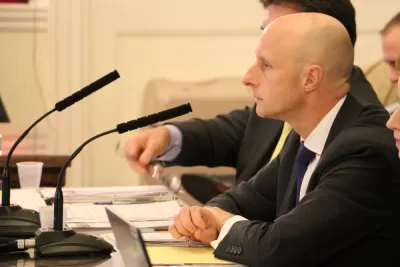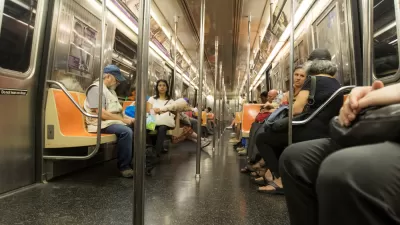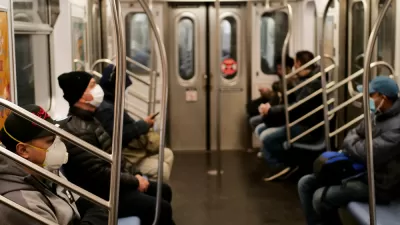Andy Byford has resigned as president of the New York City Transit Authority, after building a track record that includes ridership and service improvements on the troubled MTA subway system.

"Andy Byford, the Metropolitan Transportation Authority transit chief credited with leading the turnaround of the New York City subway system, is resigning again," reports Dana Rubinstein.
The word "again" deployed here because Byford rescinded a resignation in October 2019—about the same time as ridership and service improvements started to arrive on the MTA subway system, and the MTA announced a large capital investment to improve elevator access to system stations. Numerous other ambitious plans made their debut during Byford's tenure, a $19 billion repair program, speed limit increases, and the "Bus Action Plan," to name a sample.
Central to Byrford's previous frustrations, according to Byford, was another signature initiative of Byford's tenure: repairing signals.
The MTA’s leadership ultimately convinced him to rescind that resignation, in part by promising to let him retain control over subway resignaling — a Byford hobbyhorse considered key to turning around the subway system over the long term. A Cuomo-driven reorganization threatened to take the resignaling away from New York City Transit and give it to the MTA’s newly centralized capital construction force.
A statement released by Byford, quoted in the article, doesn't reveal the reasoning behind the resignation.
FULL STORY: Byford, Cuomo’s popular subways chief, resigns (for good this time)

Maui's Vacation Rental Debate Turns Ugly
Verbal attacks, misinformation campaigns and fistfights plague a high-stakes debate to convert thousands of vacation rentals into long-term housing.

Planetizen Federal Action Tracker
A weekly monitor of how Trump’s orders and actions are impacting planners and planning in America.

San Francisco Suspends Traffic Calming Amidst Record Deaths
Citing “a challenging fiscal landscape,” the city will cease the program on the heels of 42 traffic deaths, including 24 pedestrians.

Defunct Pittsburgh Power Plant to Become Residential Tower
A decommissioned steam heat plant will be redeveloped into almost 100 affordable housing units.

Trump Prompts Restructuring of Transportation Research Board in “Unprecedented Overreach”
The TRB has eliminated more than half of its committees including those focused on climate, equity, and cities.

Amtrak Rolls Out New Orleans to Alabama “Mardi Gras” Train
The new service will operate morning and evening departures between Mobile and New Orleans.
Urban Design for Planners 1: Software Tools
This six-course series explores essential urban design concepts using open source software and equips planners with the tools they need to participate fully in the urban design process.
Planning for Universal Design
Learn the tools for implementing Universal Design in planning regulations.
Heyer Gruel & Associates PA
JM Goldson LLC
Custer County Colorado
City of Camden Redevelopment Agency
City of Astoria
Transportation Research & Education Center (TREC) at Portland State University
Jefferson Parish Government
Camden Redevelopment Agency
City of Claremont





























